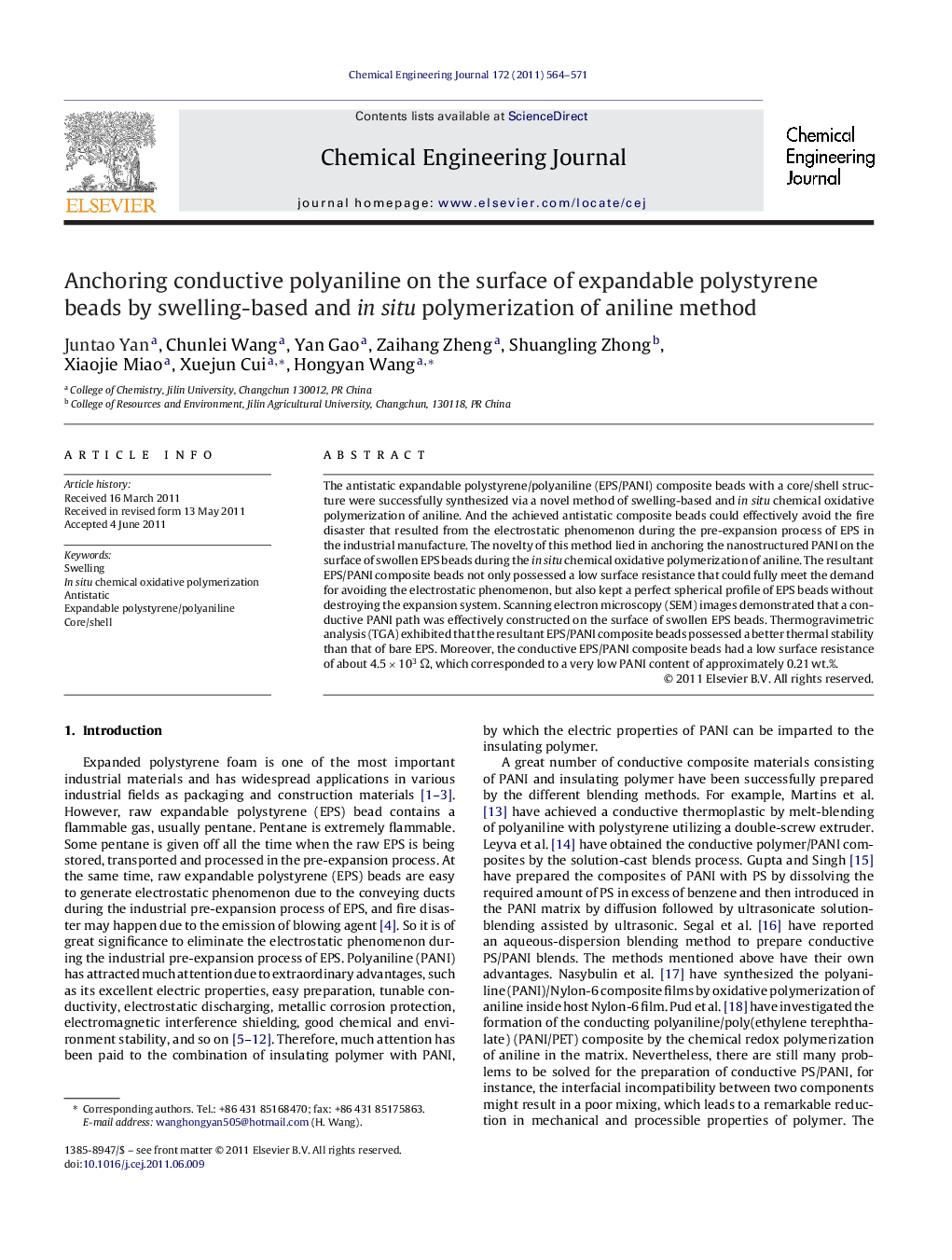| Article ID | Journal | Published Year | Pages | File Type |
|---|---|---|---|---|
| 151084 | Chemical Engineering Journal | 2011 | 8 Pages |
The antistatic expandable polystyrene/polyaniline (EPS/PANI) composite beads with a core/shell structure were successfully synthesized via a novel method of swelling-based and in situ chemical oxidative polymerization of aniline. And the achieved antistatic composite beads could effectively avoid the fire disaster that resulted from the electrostatic phenomenon during the pre-expansion process of EPS in the industrial manufacture. The novelty of this method lied in anchoring the nanostructured PANI on the surface of swollen EPS beads during the in situ chemical oxidative polymerization of aniline. The resultant EPS/PANI composite beads not only possessed a low surface resistance that could fully meet the demand for avoiding the electrostatic phenomenon, but also kept a perfect spherical profile of EPS beads without destroying the expansion system. Scanning electron microscopy (SEM) images demonstrated that a conductive PANI path was effectively constructed on the surface of swollen EPS beads. Thermogravimetric analysis (TGA) exhibited that the resultant EPS/PANI composite beads possessed a better thermal stability than that of bare EPS. Moreover, the conductive EPS/PANI composite beads had a low surface resistance of about 4.5 × 103 Ω, which corresponded to a very low PANI content of approximately 0.21 wt.%.
► A novel method of swelling-based and in situ polymerization of aniline was reported. ► The antistatic expandable polystyrene/polyaniline beads were firstly synthesized. ► The EPS/PANI beads possessed a low surface resistance and PANI content. ► The EPS/PANI beads also possessed a good expansion system as EPS beads. ► The novel method could be easily scaled up in industrial manufacture.
